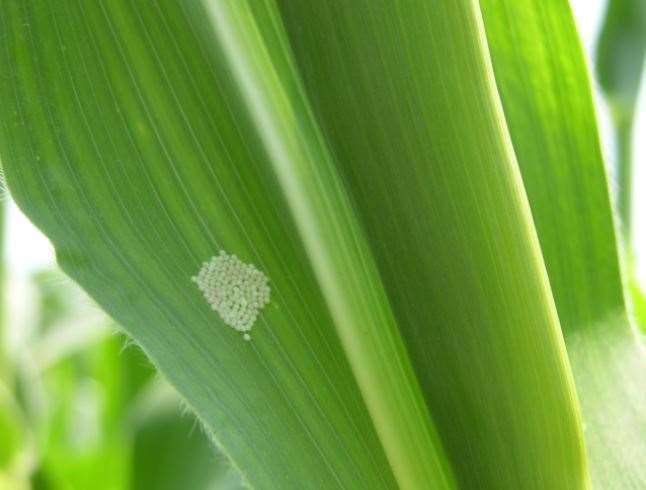The key to protecting your crops from WBC is tracking the moth flight patterns
By Jennifer Jackson
Across the province, producers are finding western bean cutworm (WBC) moths. These findings, however, are no cause for concern yet, according to Tracey Baute, field crops entomologist for the Ontario Ministry of Agriculture Food and Rural Affairs (OMAFRA).
Even more important than the specific number of pests in the traps is the trend of their appearance in the traps.
“It is very normal to be trapping (WCB moths) at this stage,” she says.
“Despite the number of moths being caught, (high numbers) does not mean that there is damage in the field. The traps are there to see that the moths are present (and to track) when we see peak moth flight.”
The moths will lay eggs on the upper leaves of corn plants. The larvae hatch and feed on the corn’s tassel – without it, the larvae will starve.
Baute recommends producers start scouting their corn fields when plants approach and are in the tasselling stage, and while the moths are in their peak flight times.
“We like to say (the spraying threshold) is (when) 5 per cent of 100 plants have eggs,” she says. “Even if your scouting accumulates to 5 per cent over a time period.”
Producers will see the egg shadows when the sun shines on the affected leaves.
“You want to spray when the larva are hatched – about a week after moths lay eggs,” says Baute.

Tracey Baute, OMAFRA photo
“Our concern is that producers may be spraying too early – we want to see that farmers hold off (on) spraying until shortly after peak moth flight to get the majority of larva feeding on the tassels.”
The larvae themselves do not greatly impact yield directly; instead, the larvae feeding opens up the ears to quality risks such as ear rot.
“This year, due to weather, the crop is generally a little behind in its growth stage – it is lining up that the pre-tassel to tassel stage will be right around peak moth flight,” says Baute.
OMAFRA uses data from participating producers’ moth traps to monitor the flight trends of the WBC moths. The ministry updates peak moth flight information online, Baute says.
“Don’t panic when (you) start to trap moths but do monitor the trend,” she recommends.
“The critical time to scout is the pre-tassel to tassel stage – depending on the staging, two fields side by side could have greatly different (WBC larvae) populations.”
More information about this pest can be found on Baute’s online field crop news blog.